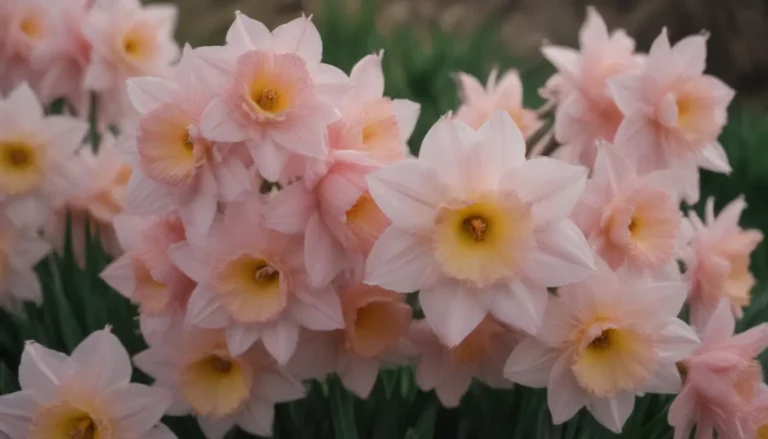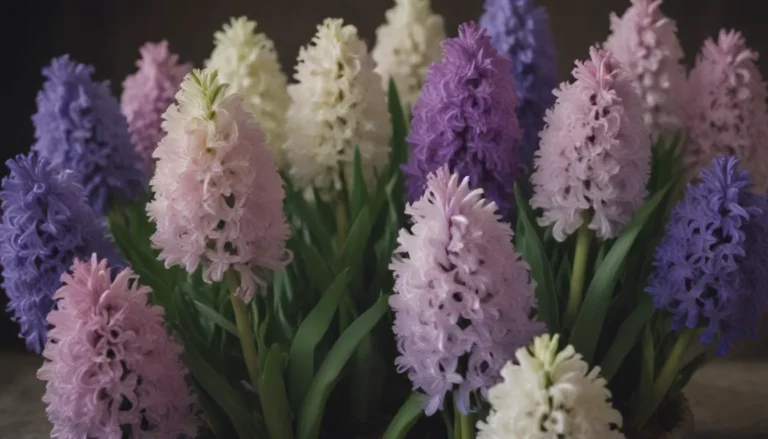The Ultimate Guide to Growing and Caring for Broom Plants

If you’re looking for a vibrant, easy-to-grow shrub to add color to your garden, broom plants might be the perfect choice for you. In this comprehensive guide, we will explore everything you need to know about growing and caring for broom plants, from different varieties to pruning techniques and propagation methods. By the end of this article, you’ll be equipped with the knowledge to successfully cultivate these beautiful shrubs in your own garden.
Getting to Know Broom Plants
Broom plants are small- to medium-sized shrubs with evergreen or deciduous foliage that grow quickly in a lax, bushy habit. They are characterized by green, lanceolate leaves and bear pea-like flowers in shades of yellow that attract pollinators. Two main species that share the common name broom are Cytisus and Genista, with Genistas being more tolerant of lime in water and soil. Cultivars and hybrids in various flower colors are also available, providing a wide range of options for gardeners.
Before you decide to plant a broom in your garden, here are a few key points to consider:
- Broom plants are toxic to humans and pets.
- Some broom species may be classified as invasive, depending on your location.
- Brooms thrive in open, sunny locations with well-draining soil.
- They are overall low-maintenance plants that can tolerate wind, poor soil, drought, and rocky conditions.
Tips for Caring for Broom Plants
Light and Location
Broom plants thrive in full sun, although they can tolerate some shade. However, too much shade may result in leggy growth with fewer blooms. Make sure to follow the specific light and location requirements for the variety of broom you choose to plant in your garden.
Soil
It’s essential to establish broom plants in well-drained loam or poor soil, such as clay, sand, or loam. While Cytisus prefers acidic soil, Genista is more tolerant of alkaline/chalky soils. Broom plants can thrive in poor soil conditions, through drought and neglect, with their fibrous, fast-growing stabilizing roots that can even fix nitrogen in the soil. Mulching alkaline soil with ericaceous compost in the spring can help maintain optimal soil conditions for broom plants.
Watering
During the first few months after planting, water broom plants regularly to keep the soil moist. In the first year, maintain moisture to help establish the roots. Provide approximately an inch of water each week, especially during the first summer and periods of heat or drought. Allow the soil to dry out between waterings, but consider habitual watering if the location is dry and the soil is poor.
Temperature and Humidity
Broom plants perform best in conditions where many other flowering shrubs may fail. They bloom as early as late winter through the early spring months in USDA Zones 8-10, thriving in cool temperatures. To encourage blooming, maintain temperatures between 35 and 60 degrees Fahrenheit during autumn and winter. Apply a layer of lightweight shredded bark mulch to keep the roots cool and prevent moisture loss, particularly during hot summer months.
Fertilizer
Broom plants typically thrive in poor soil conditions and may not require additional fertilizer. However, if needed, use a balanced fertilizer sparingly to avoid overfeeding the plants.
Exploring Different Broom Varieties
There are numerous broom species, cultivars, and hybrids available for gardeners to choose from. Some popular varieties include:
Cytisus Varieties
- Cytisus x kewensis (Kew broom)
- Cytisus x spachianus (sweet broom)
- Cytisus x ‘Lena’ (Lena Scotch broom)
- Cytisus x praecox (Warminster broom)
- Cytisus scoparius (common broom, Scotch broom)
- Cytisus racemosus nana (dwarf yellow broom)
Genista Plant Varieties
- Genista lydia (Lydian broom)
- Genista hispanica (Spanish gorse)
- Genista aetnensis (Mount Etna broom)
Pruning Techniques for Broom Plants
While broom plants are generally low-maintenance and do not require regular pruning, occasional trimming can help extend their lifespan. Here are some tips for pruning Cytisus and Genistas:
Pruning Cytisus
- Prune Cytisus varieties annually after flowering has ceased.
- Timing is crucial when pruning Cytisus racemosus, as flowers appear on old wood. Prune in late spring or summer, avoiding pruning in autumn or winter.
- Use sharp, sterilized pruning shears to cut the plant back by a third at a 45-degree angle to promote healthy growth and blooming.
Pruning Genistas
- Pruning requirements for Genistas vary by variety. Research the specific needs of your Genista plant before pruning.
- For example, Genista aetnensis can be pruned multiple times during a season to encourage bushy growth, while Genista hispanica may need light shearing after flowering.
Propagation Methods for Broom Plants
While division is not recommended due to their deep taproots, broom plants can be propagated from cuttings. Here’s how you can grow broom plants from seed:
- Collect seeds from mature broom plants.
- Prepare a well-draining growing medium in pots or trays.
- Sow the seeds at the appropriate depth and spacing.
- Keep the soil moist and provide adequate sunlight for germination.
- Transplant seedlings once they have developed roots and are ready for planting in the garden.
Potting, Repotting, and Overwintering Broom Plants
If you choose to grow broom plants in containers, select smaller or dwarf varieties and ensure the pot has proper drainage. Repot the plant to a larger container as needed to accommodate root growth. During winter, protect potted broom plants by insulating the roots from freezing temperatures.
Dealing with Pests and Diseases
Keep an eye out for common pests such as webworms and gall mites that can affect broom plants. Maintain a clean garden environment by removing debris to prevent pest infestations. If disease or pest issues arise, consider contacting a local garden center for advice on treatment options.
Encouraging Blooms in Broom Plants
If your broom plant fails to bloom, it may be due to improper pruning or lack of sunlight. Ensure your broom plant receives full sun to encourage blooming. While brooms are relatively short-lived shrubs with a lifespan of 10 to 15 years, proper care and maintenance can help maximize their blooming potential.
In conclusion, broom plants are versatile, colorful additions to any garden. By following the care tips and techniques outlined in this guide, you can successfully grow and enjoy the beauty of broom plants in your outdoor space. Whether you prefer Cytisus or Genista varieties, these shrubs offer a range of options for gardeners seeking vibrant, low-maintenance plants. Happy gardening!





